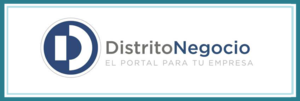How to Build Recurring Revenue: a Key to a Valuable Business
Takeaway: Recurring revenue is the holy grail for business owners looking to have a valuable and sellable company. Learn how to secure stable and predictable cash flow in your business.

Recurring revenue is the holy grail for business owners looking to have a
valuable and sellable company. A customer base with a subset of
recurring revenue that is contractual and repeating in
nature increases the probability that the business will have stable,
predictable revenues and cash flow
into the future.
From a buyer’s perspective, this reduces future risk and therefore
enhances perceived value. The value associated with acquiring the
available cash flow is directly related to risk. The lower the
risk of losing that cash flow in a transfer of ownership, the higher the
price will be to acquire it. Any factor that reduces risk is rewarded
with transaction value.
Although all recurring revenue will have a positive impact on business
value, some forms are more desirable than others. Here are a list of the
types of recurring revenue in an order from good to
best.
Consumables
If you sell a consumable product, whether it be diapers, commercial cleaning supplies, or office supplies, start tracking your repurchase rate from existing customers. This will be a number that buyers will use to calculate your projected sales into the future — and to calculate how much they’re willing to pay to buy your company today.
Subscriptions
Even better than having loyal customers who repurchase is having revenue
that is guaranteed into the future. For example, loyal subscribers to
magazines, newspapers, and other publications get a
renewal letter each year and pay upfront for the next 12 issues. They
make the conscious decision to renew into the future for a certain
period of time.
Automatically renewed subscriptions are even more attractive than
periodic renewals because they require a conscious decision to cancel
rather than renew. For instance, we use Mozy.com to
automatically backup some of our office computers online on a daily
basis and are charged a fee each month. This subscription service has no
end date unless we tell them to stop providing the
service. GoToMyPC.com also operates in this manner. By tracking historic
cancellation rates revenues can be predicted well into the future, which
is why these types of revenue streams enjoy higher
valuations.
Contracts
The only thing more valuable than an automatic renewal subscription is a hard contract for a defined term. Wireless cell phone companies come to mind as one of those industries that push hard to get you on a multi-year contract. When a company is acquired, the owner and some employees may leave after the acquisition. But customers with plenty of time remaining on their contracts are security for the acquirer. As you ascend the recurring-revenue hierarchy, the value of the business will go up accordingly.
Recurring Revenue Models for your Business
Do you think that recurring revenue is tough to achieve in your business? Here are some examples of recurring revenue models that might spark some ideas:
- maintenance contracts
- monthly support agreements
- annual license agreements
- warranties
- subscriptions
- accounting firms that provide annual tax return preparation and audits
- security firms that monitor home and commercial businesses on a monthly basis
- HVAC companies that perform routine maintenance of equipment
- software companies that provide annual user support and software upgrades for a maintenance fee
- landscape maintenance companies
- pool service companies
- janitorial companies
Benefits of Recurring Revenue
The recurring revenue customer base you build for your company will:
- Increase the probability that you will have stable revenues and cash flow
- Decrease future risk in the mind of a potential buyer
- Provide you with an opportunity to sell additional products or services to your existing customer base
- Keep you more attuned to your customer needs while helping you ward off competition
- Provide a corporate buyer with the opportunity to cross-sell its products to your customers
- Provide a justification for a higher sales price of your business
Ensuring your company has a predicatable and stable revenue base will mitigate risk in your business and leads to a much higher valuation.
Master Ten Value Drivers to Sell Your Business at the Highest Price
Takeaway: Evaluate your company through the eyes of a buyer. Master these ten value drivers and sell at the higher range of the multiples normally associated with your industry.

Business Value -- What Drives It?
A valuation is not about determining what a company is worth in the current owner's hands, it is about the company's transferable value. The purpose of this article is to help you evaluate your company through the eyes of a buyer. From that perspective we will ask you to focus on ten value drivers. Each driver is a characteristic of a business that either reduces the risk associated with owning the business or enhances the prospect that the business will grow significantly in the future. Simply put, the better your performance in these areas, the greater the selling price of your business. The likely result is that you will sell at the higher range of the multiples normally associated with your industry.
Value Driver #1: Stable and Predictable Cash Flow
Think of revenue and the bottom line cash flow of your business as the first introduction to a buyer. Revenue and cash flow is the number one attraction. A business with an established pattern of growth will bring a premium price when it is sold. The value associated with acquiring the available cash flow is directly related to risk. The lower the risk of losing that cash flow in a transfer of ownership, the higher the price will be to acquire it. If recurring revenues comprise a material portion of a company’s overall revenues, the recurring revenue stream can be valued at a higher level than the non-recurring revenues. Examples of recurring revenues are maintenance contracts, monthly support agreements, annual license agreements, warranties, subscriptions, or other revenue streams that are contractual and repeating in nature. Buyers are willing to pay the highest amount when their perception is that cash flow is predictable and will increase into the future. Learn more about building a recurring revenue base here.
Value Driver #2: Reliable Financial Information
Reliable financial records are not only a critical element of business management but also support the claim that a company is consistently profitable. In the purchase of a business, the buyer will perform some level of financial due diligence. If the buyer is not comfortable when reviewing the company’s past financial performance, there is no deal, or at best a reduced value for the company. If a buyer faces a seller of a business who asserts that the company has been making $1 million per year for the past three years and is projected to make at least that much in the future, the seller will be required to prove it. If the seller then produces past financial statements that are incorrect, insupportable, or incomplete, the buyer would most likely be gone. The lack of financial integrity is one of the most common hurdles encountered during the sale process.
Value Driver #3: Customer Diversity
A broad customer base in which no single client accounts for more than five to ten percent of total sales helps to insulate a company from the loss of any single customer. It reduces the risk of serious cash flow issues if one or more customers do not stay under new ownership.
Value Driver #4: Human Capital / Quality of Workforce
Keep your talent, they are your business. Buyers look for situations where management and / or key employees want to stay for the long term. The quality of the workforce, including experience, expertise and depth of knowledge, is also considered. An in-place team that can provide continuity and assist in the growth of the business under new ownership is a valuable asset. If a company’s success is reliant on capable, well-trained employees - not the owner - it means the business will not be negatively impacted under new ownership. This reduction of risk will pay off with increased purchase price.
Value Driver #5: Growth Potential
When an owner can describe realistic opportunities for growth that specifically illustrate the reasons why cash flow and the business itself will grow after it is acquired, a higher value can be achieved. A documented growth plan demonstrates the viability of the company’s future and may identify opportunities that a buyer had not considered. Some areas to consider in developing a growth plan:
- Is your business in a growth industry?
- Are there additional markets that a new owner should pursue?
- What additional products could be delivered to existing customers?
- Where are the best profit margins realized and can they be expanded?
- Can your technology be licensed?
- Will demand for your product or service increase as population grows?
- How will enhanced marketing campaigns and sales efforts affect growth?
- Are there opportunities to grow through acquisition?
- Can growth be achieved by expanding territory or manufacturing capacity?
Value Driver #6: Operating Systems and Procedures
The establishment and documentation of standard business procedures and systems demonstrate that the business can be maintained profitably after the sale. Business systems include the computerized and manual procedures used in the business to generate its revenue and control expenses, as well as the methods used to track how customers are identified and how products or services are delivered. The following are examples of business systems that enhance business value.
- Personnel recruitment, training and retention
- Human resource management (an employee manual)
- New customer identification, solicitation, and acquisition
- Product or service development and improvement
- Inventory and fixed asset control
- Product or service quality control
- Customer, vendor and employee communication
- Selection and maintenance of vendor relationships
- Business performance reports for management
Value Driver #7: Facility and Equipment Condition
The business facilities and equipment should be well maintained to realize maximum value. A buyer will not pay a premium, and may very well discount an offer, for a disorganized warehouse, office or other building. Seeing disorganized or poorly maintained facilities and equipment may cause the buyer to perceive that other aspects or the business may be similarly disorganized (employee records, financial records, compliance records, etc.). Owners should ensure that facilities and equipment are organized and maintained in peak condition before beginning the sale process. Buyers will appreciate that their investment will not include major repairs and that all equipment and inventory will be easy to locate and identify. Lastly, are the facilities large enough and machinery sufficient to accommodate some level of modest sales growth? A buyer does not want to have to look for additional space or immediately invest in new equipment shortly after closing.
Value Driver #8: Goodwill
This value driver involves stability and consistency. Name recognition, customer awareness, history, ongoing operations, and reputation are all part of business goodwill and influence value. Even if the company does not have many hard s/assets/cdn.website-start.de, relationships are key. The fact that customers have been with the company for a period of time does matter. Brand recognition, service or product reliability, and high customer satisfaction are distinguishing factors that add value. This driver of goodwill should not be overlooked in a valuation because it is helps mitigate perceived risk.
Value Driver #9: Barriers to Competitive Entry
Features that give a business an advantage over its competitors, strengthen its strategic position, or that can be leveraged for future gain boost value and lessen perceived risk. Buyers will pay a premium for a niche that has barriers to competitive entry. One way to describe this Barrier Value Driver is to use Warren Buffet's term, "Business Moat." Buffet compares a castle's moat to the protection that a business needs to encroaching competitors. For instance, the wider the moat, the more easily a castle could be defended. A narrow moat did not offer much protection and allowed the castle to be breached. To Buffett, the castle is the business and the moat is the barrier that protects the business' competitive edge. The following are example barriers that widen the moat and hinder competitors from breaching the company’s castle.
- Copyrights
- Trademarks
- Patents
- Trade Secrets
- Developed Processes
- Proprietary Designs
- Proprietary Know-How
- Brand or Trade Names
- Engineering Drawings
- Customized Software Programs
- Step-by-Step Training Systems
- Customized or Proprietary Databases
- Published Articles or Industry Press
- Hard-to-get licenses, zoning, permits, or regulatory approvals
- Contracts with difficult-to-penetrate entities (government, for example)
Value Driver #10: Product Diversity
A narrow product set increases risk and drives down value. Diversity of revenue sources lowers the inherent risk of the business. Therefore, businesses with a healthy product mix, good gross profit diversification, or with products or services sold into multiple industries, receive a higher perceived value from prospective buyers.
Magic Tricks to Help You Get the Valuation You Want
Takeaway: Valuing a company is more black magic than science. These tricks will help you get the highest possible price.

People often talk about the purchase price paid for a business as
multiples of EBITDA. Whenever I hear business owners that
have successfully
navigated the sale of their business say, "I sold my business for five
times", I think to myself, "5 times what? TTM
EBITDA? NTM EBITDA? Maybe it was revenue. Wow, that
would be nice!"
I never have the guts to say it out loud because I am certain they would
only hear the sarcasm in my voice. When selling a business, it's great
to brag about getting a high valuation multiple but for
me, I'd rather just help my clients get the highest possible price - and
one that greatly exceeds their expectations.
So how exactly do I do that? If you're selling your business, here are
three valuation tricks you can perform prior to a sale to help you
achieve or exceed your value expectations.
Trick 1: Calculate Your Implied Valuation Multiple
I call this the EBITDA shell game. Similar to sellers bragging about
selling for high valuation multiples, buyers
like to boast about how they got a great deal, paying a low multiple.
Use this to your advantage, and remember that the end goal is to get the
highest purchase price, not the highest multiple. You
can calculate the valuation multiple based on various metrics to find -
and show - the one that's the lowest.
Let's say that your business has EBITDA for the last fiscal year-end at
December 31st of $5 million. Today is June 30th, and your TTM EBITDA has
increased to $5.2 million. The company is anticipating
an upward trend, and will reach NTM EBITDA of $5.8 million. If your
valuation expectation is $22 million, then the implied valuation
multiples are:
- 4.4x Last Fiscal Year EBITDA
- 4.2x TTM EBITDA
- 3.8x NTM EBITDA
So, what I tend to do is help potential buyers find the lower EBITDA multiple so that they can gloat to their board of directors, investors and other stakeholders that they got a steal of a deal for your company by only paying 3.8x - even though it's really just a different way of portraying the same valuation.
Trick 2: Understand Acquisition Financing and a Buyer's ROI
This is what I call IRR behind the ear. A smart buyer will know the cost of equity and will only make investments that provide a return in excess of that cost. In general terms, financial buyers of mid-market companies are looking for a return on investment (ROI) or internal rate of return (IRR) in the range of 25-35 percent depending on the inherent risk of the business. Provide proof that purchasing your business at your valuation expectation will allow the buyer to achieve the IRR thresholds it's looking for. Here's a step-by-step summary of how you perform the analysis:
- Figure out how the acquisition of your businesses will be financed. Talk to an investment banker and ask what the current level of debt to equity is on M&A deals. Using that ratio, apply it to your value expectations. Using the example above of a $22 million value expectation, let's say that an appropriate debt-to-equity ratio in the current M&A environment is 50 percent debt and 50 percent equity. In that case, an acquisition of your business could be financed as $11 million in debt and $11 million in buyer's equity.
- Determine the free cash flows of the business over the next five years, including the cost to service the debt amount used in the acquisition.
- Calculate the equity remaining for the buyer assuming that the company will be sold after five years at a conservative multiple of EBITDA (usually the same as the entry multiple).
- Use the initial equity investment determined in No.1 above, the free cash flows after debt servicing in No.2 and the equity remaining for a buyer upon a subsequent sale in No.3 to calculate the potential IRR on their investment.
Hopefully, this analysis proves that the valuation of your business will earn your buyers a fair return on investment. If not, you might have to reassess the reasonability of your valuation expectations. Effectively, in this analysis, you have taken the buyer's IRR and pulled it from behind their ear. Magic!
Trick 3: Be Prepared to Show Your Cards
I call this pulling a valuation out of a hat, and it's a pretty
straightforward trick. Try telling a buyer your valuation expectations
upfront and provide them with the supporting calculations to
prove your number. Sounds silly, doesn't it? In an auction process, the
common practice is to provide the buyer with enough information to
formulate a valuation. In this scenario, you take the
offensive rather than defensively waiting to receive offers.
Some would argue that this method might preclude a seller from getting a
premium offer because the valuation will create a ceiling price that a
buyer is willing to pay. From my experience, it is much
more likely that buyers' offers, even in a competitive auction process,
will fall short of a seller's expected value. Unless you truly believe
that there will be a number of strategic buyers willing
to pay a premium for your company, this strategy could help you pull
your valuation out of a hat.
Some Sage Advice About Valuation
Valuing a company is more black magic than science, but if you are prepared and apply a little slight of hand, you can work toward getting the valuation you want. Don't let a buyer dictate the assumptions used in determining the value of your business.







